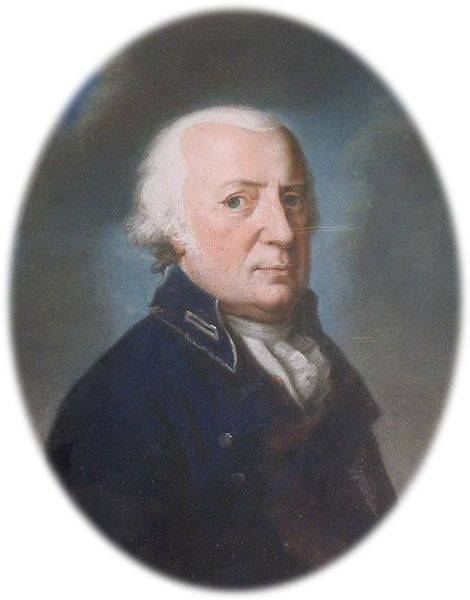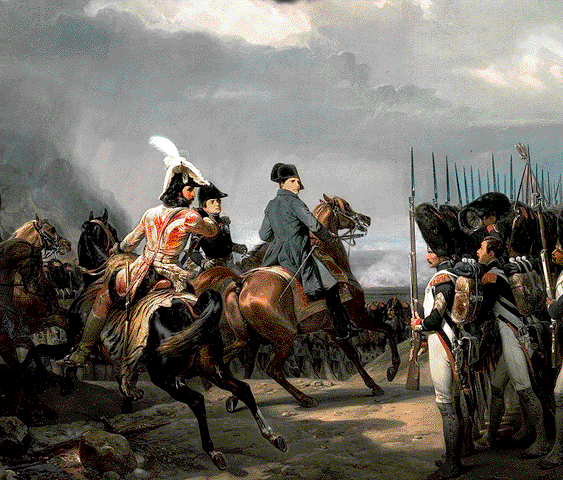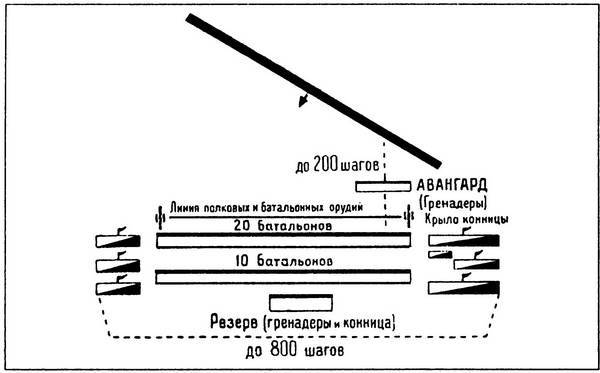As a military psychosis led Prussia to a military-political catastrophe
By the fall of 1806, the international situation in Europe has dramatically escalated. It is possible that the state of the "half war" would have lasted longer if it were not for the military psychosis in the Kingdom of Prussia.
During the war of the Third Coalition in 1805, Prussia remained neutral, although Berlin was leaning towards Vienna and St. Petersburg, and had already decided to speak, but Austerlitz forced the Prussians to change their mind. However, in the 1806 year in Berlin it was decided that France had gone too far, spreading its influence in Germany. The “military party”, headed by Queen Louise, who had a special relationship with the Russian Tsar Alexander, came to the fore in Prussia.
In Berlin, in the high society, the long-forgotten notions of “honor”, “duty”, “sword”, “glory of Frederick the Great” spoke. They began to recall the knightly valor of the Prussian nobility. Queen Louise rode around the shelves lined up on the parade; the officers laid out swords and made warlike screams. In the courtyard of the Hohenzollern and the salons of the Prussian gentlemen, they began to assert that the Prussian army is the strongest in Europe and in the world, that the Prussian officers are the most courageous, that the Prussian monarchs are the most powerful and valiant dynasty.
Thus, a real military psychosis reigned in Prussia. Berlin, convinced that the Prussian army was the true keeper of the precepts of the victorious Frederick the Great, hurried to start the war first, so as not to share the laurels of Bonaparte with anyone.
Declaration of war
October 1 1806 Berlin presented an ultimatum to Napoleon demanding to withdraw French troops from the German lands beyond the Rhine within ten days. The response time was set for October 8. In Berlin, no doubt of victory. Higher nobility, generals and officers bragged that they would teach a Corsican upstart with all their might. While waiting for an answer to the ultimatum, the Prussians flaunted parades with triumphant shouts and ridicule of the French emperor. Prussian officers came to the hotel, where the French envoy was located and “bravely” sharpened their sabers on the steps of the grand staircase. Some of the generals declared that the war would end in a matter of days, with one blow (here they were not mistaken) and regretted that the Prussian army was taking rifles and sabers with him to the war. They say that only a club would be enough to drive the French away. They were afraid only of one thing, so that Frederick William III would not make peace before the military defeat of France. To inspire the soldiers to heroic deeds, they were taken to the theater on Wallenstein and Schiller's Orleans Maiden.
Prussian headquarters considered two options for action. The first was to adhere to a defensive strategy at the beginning of the war and when the French army approached, slowly withdraw for the Elbe, and then for the Oder, unite with the Russian troops and Prussian reserves and, finally, use the combined forces to counterattack and give a general battle to the enemy . That is, in general, this plan was reminiscent of the preliminary plan of the 1805 campaign of the year, when the Austrians had to wait for the Russian army and attack Napoleon together. But the Austrians did not wait for the Russians and independently launched an offensive, which eventually led to the military-political catastrophe of Austria and the defeat of the third anti-French coalition.
Prussian generals were not smarter than the Austrian. The Prussian military considered it a disgraceful retreat, and therefore this plan was decisively rejected. As a result, we stopped at the second version. The Prussians planned to invade the Allied France of Bavaria, attack the French at their home sites, smash the enemy corps one by one, and thus force Napoleon to retreat beyond the Rhine. By this time, Russian troops had to join the victorious Prussian army and the Allies could continue the offensive.
For the upcoming war, the Prussian kingdom could expose about 180 thousand people. Just a few days before the start of the war, a divisional and corps organization was introduced to the Prussian army. The Prussian army was consolidated in the 4 Corps (14 divisions).
The so-called main corps, which had up to 60 thousand soldiers, according to the disposition of October 7, was located between Merseburg and Dornburg. They were led by the commander-in-chief of the Prussian army, Karl Wilhelm Ferdinand, Duke of Brunswick. This elderly commander (1735 was born) received combat experience even during the Seven Years War and was a great supporter of the Friedrich School. In 1792, the duke led the combined Austro-Prussian army, which opposed revolutionary France, but was defeated at Valmy.

Prussian commander-in-chief Karl Wilhelm Ferdinand of Brunswick
The 2 Corps was 43 Thousands of Prussian and 20 Thousands of Saxon Soldiers. It was located in the Chemnitz region, and was headed by Prince Frederick Louis Hohenlohe, who lost his principality when the Rhine Union was created. The main and 2 corps were assigned the task of attacking the French during their march into Saxony.
The 3 Corps, under the command of General Rüchel, comprised thousands of 27 men in the region of Eisenach, Gotha and Erfurt. He had to cover the direction of the Hessian Elector, while remaining in place. The 4 Corps under the command of Prince Eugene of Württemberg - about 25 thousand people - was scattered in East Prussia, Poland and Silesia.
Meanwhile, the French Emperor Napoleon, concentrating his troops on the river Main, planned to cross the Franconian and Thuringian forests, bypass the left flank of the Prussian-Saxon position and force the Germans to take the battle with an upturned front. For the upcoming maneuver, the emperor divided his troops into three columns, which were supposed to move in the form of a giant battalion of square. The right column was the corps of Soult, Ney and the Bavarian division of Wrede; the center is the corps of Bernadot, Davou, the imperial guard, Murat's cavalry; the left column is the Lanna and Augerero corps. It focused almost the entire core of the French army. Against Prussia, the emperor set about 200 thousand people. Thus, Napoleon traditionally led the matter to one or two decisive battles that were to decide the outcome of the war. He did not intend to wait for the attack of the enemy and the formation of Prussian and Russian troops. So this amazing war began.
Napoleon did not wait for the boastful Prussian army to go on the offensive, he did not even wait for the expiration of the ultimatum. October 6 1806, in a message to the Senate and the order for the army, he announced that France is entering the war with Prussia. Without losing time, the emperor moved towards the enemy. October 8 ordered the invasion of the Allied Prussia of Saxony, and the "Great Army", concentrated in Bavaria, began to cross the border in three columns.

Napoleon at the Battle of Jena. Painting by Horace Vernet
Prussian army
To understand the causes of the catastrophe that will overtake the Prussian army and kingdom, it is necessary to familiarize yourself with the state of the Prussian army of the early 19th century. If Napoleon’s army was the brainchild of a new socio-economic structure generated by the bourgeois revolution, the armies of his opponents reflected the feudal-absolutist system with underdeveloped industry and serfdom in the village. A typical Prussian soldier is a peasant serf, who was given entirely to the power of noble officers. It is clear that such a soldier went to the war due to coercion and did not want to fight. War hysteria and propaganda engulfed only the tip of Prussian society and did not offend the interests of the broad masses of the people. While the French soldier went into battle, believing that he was defending the gains of the revolution, that is, he had moral and strong superiority over the enemy (except for the Russians), the recruited soldier of the Prussian monarchy went into battle because of coercion.
Only by the end of the Napoleonic wars did the situation change: France was drained of blood and disappointed by the endless wars of Napoleon’s empire, the revolutionary spirit was extinguished. The weary soldiers of the French army lost their collective will to fight, while the opponents of France, humiliated by the French invasion, had matured the national liberation movement.
The armies of Napoleon’s opponents were organized according to the Prussian model, built on the experience of the Seven Years War with its linear tactics and brutal cane discipline. The soldier and officer of the Prussian army is an army reflection of the caste-estate division of society. The relationship between them was based on the subordination of the serf to his master. The Prussian soldier was in service until he died or became disabled. Only after that he was subject to mobilization, and instead of the pension he was given a special certificate for the right to begging. There was nothing like the unity of a soldier and an officer that appeared in the French army, where any capable young man could become a top officer and general. Prussian generals, representatives of the landowning aristocracy, were not able to understand that the socio-economic and political shifts that occurred in France forever threw the Frederick system into depth. stories. She is outdated.
However, the government of Prussia, led by King Frederick William III, did not understand this. Reaping the laurels of the “glorious past” of the era of Frederick the Great and maintaining the old order, Berlin did not allow for any reforms. For example, the commanding staff in the Prussian army sat up in their posts almost to natural death. In 1806, of the 66 colonels of the Prussian infantry, almost half were over sixty years old, and of the 281 major there was no one younger than fifty. It is clear that in this environment it was difficult to find commanders able to resist Napoleon and his pleiad of brilliant generals.
The military theory of Prussia was strongly influenced by the theorist Lloyd, who attached exceptional importance to the terrain, cultivating the "science of choosing positions." The basis of Lloyd’s theory is a thorough study of geography in search of such positions on the ground that would be inaccessible to the enemy and at the same time ensure the communications of his army. Convenient and advantageous positions were emphasized, calling them "position keys" and even "country keys".
Based on the experience of the war for the Bavarian 1778-1779 inheritance, which ended without a battle after long stomping opponents on the potato fields, Lloyd's theory allowed the possibility of waging war only by maneuvering, without decisive battles. It was believed that the dependence of the enemy on the 5-ti transition supply system made it possible by constant threat to his messages to force him to retreat.
At the beginning of the 19th century, Bulov’s theory, which “perfected” the idea of Lloyd, became even more widespread in the armies of Europe. If Napoleon considered the life force of the enemy to be the object of the operation, then Bulow was only enemy stores and transports. Win by weapons, according to Bülov, did not promise serious results, but access to the enemy’s communications and the deprivation of a large supply army should have led to the complete defeat of the enemy. Developing the theory of maneuverable strategy, Bülow proposed to act in two groups, one of which attracts the enemy to itself, linking it, while the other acts on its communications, intercepting them. This theory has found its supporters in Russia.
Thus, the Bulow – Lloyd theory was quite in the spirit of absolutist monarchies. They say that a decisive battle with a strong enemy is dangerous in its consequences when a hired and recruited army predominates, which for the most part does not want to shed blood, and which is difficult to replenish if it is defeated, and the soldiers will desert.
As a result, until the defeat of 1806, the Prussian army retained the fundamentals of Friedrich’s tactics — maneuvering in an open field with the flawless execution of complex reconstructions in linear battle formations. The convoy did not take place in the Prussian army’s battle formation, and the loose formation was considered risky (being outside the supervision of the commanders, the forcefully recruited soldier could desert). The battalion, armed with smooth-bore guns of the 1782 model of the year, lined up in three deployed ranks for firing volleys. Frederick’s slanting order — advancing, by maneuvering on the battlefield, a series of ledges against one of the enemy’s flanks — was used to set the pattern once and for all.
The usual battle formation, adopted by almost all armies after Frederick I, was two lines of deployed battalions with artillery on the flanks or in front of the front. The cavalry lined up behind both flanks, deploying squadrons in 2-3 ranks at a distance of 4-5 steps. Large cavalry units lined up in three squad lines. The cavalry, making up an element of general order of battle, was chained to the infantry. Supply system - only shops.

Frederick's slanting order
Only a hard lesson from Jena and Auerstedt forced Prussia to rebuild his army. These fundamental changes are related to the Scharnhorst family name. At that time it was almost the only officer of the Prussian army who understood the obsolescence of the Frederick system. Even before the 1806 war, the Scharnhorst submitted to the king a memorandum outlining the reorganization of the army, but the king and his “wise” advisers rejected almost all the proposals.
Although some innovations are still introduced: the Prussians adopted corps and divisional organization. The corps were given reserve cavalry and artillery. The infantry regiment consisted of three four-quarter battalions. The cavalry regiment consisted of 4 squadrons, artillery - from foot batteries, which were armed mainly with 12-pound cannons and 10-pound howitzers, and horse-drawn batteries that had 6-pound cannons and 7-pound howitzers. Infantry regiments had their artillery - 6-pounders. However, the reforms were late. The army has just begun restructuring.
Only after a military defeat and shame, when Prussia was saved as an independent power only thanks to the good will of Alexander Pavlovich, who had forced Napoleon to spare the kingdom of Prussia, did Scharnhorst listen to him. Berlin took the course to reform the army. The national upsurge that swept the broad circles of the population contributed to the creation of a mass army, the importance of which was finally realized.
Serfdom orders were partially abolished, abandoned the system of corporal punishment in the army. By the Treaty of Tilsit, the armed forces of Prussia were reduced to 42 thousand people. However, Scharnhorst, who became war minister, on the eve of the inevitable war with Napoleon’s empire, managed to bypass French control and create a military-trained reserve from part of the population. He acted by training young people brought up at the request of the French emperor to build fortifications on the North Sea coast against England, as well as the method of early dismissal of part of active-duty soldiers and replacing them with recruits.
Later, new reforms were carried out. After Napoleon's “Great Army” perished in Russia, Berlin introduced universal military service and created a landwehr (militia, exhibited by districts in Prussia) and landsturm (militia, called upon in case of emergency), who were trained on Sundays and public holidays. Landwehr could act with the regular army. All men capable of carrying weapons were involved in the landsturm, but were not included in either the landwehr or the regular army. Landsturm was intended mainly for the rear service, but was also used for partisan warfare in the areas occupied by the enemy. Representatives of the bourgeoisie began to enter the ranks of the officers. In addition, after 1806, the Prussian command, based on the 1811 charter of the year, drawn up with the participation of Clausewitz based on the experience of the Napoleonic wars, began to partially use the French order of battle - a combination of rifle lines with a column. The brigade's order of battle took up the 400 steps along the front and in depth.
Thus, the 1806 lesson of the year went to the benefit of the Prussian army. The army was seriously improved and by the time of the decisive battles with Napoleon in 1813, there were thousands of 240 people in their ranks, in addition, there were 120 thousands of landver and landturm.
To be continued ...
- Alexander Samsonov
- War of the Fourth Coalition
Russian-Prussian-French War 1806 – 1807.
Information